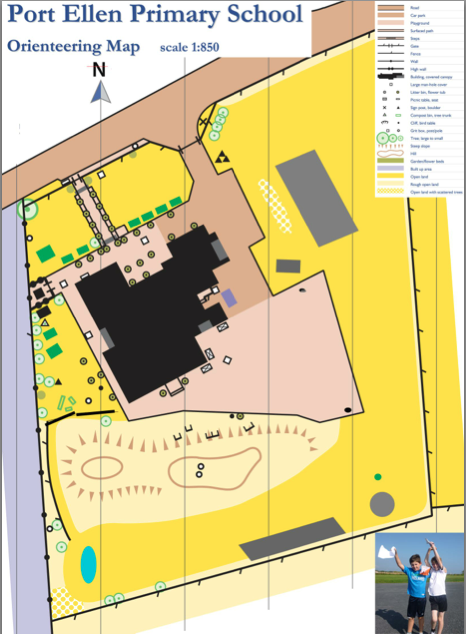This week is Maths week scotland where every kid in Port Ellen primary school will be doing extra maths themed things. Maths Week Scotland lasts from 26.09.22 to 03.10.22. “Maths week scotland is brilliant and interesting!” says Ellie P5. Maths week scotland is a week where you celebrate the importance of maths. Lots of schools do extra fun maths activities like board games, drawing Infinity tiles and doing sumdog challenges.
In P567 they have been learning about lots of different things like competitions such as the Scottish Maths Challenge and Maths inside. They have done a zoom meeting on Infinity Tiles.
Infinity Tiles are squares where the lines end at the same point every time making a continuous design. They are used in many different types of art, especially Islamic art. They also learnt about fractals. Fractals are never ending patterns like a Sierpinski triangle which is a triangle inside a triangle, inside a triangle, inside a triangle, inside a triangle, etc, etc, etc.
Maths week scotland is lots of fun and lots of kids enjoy it and participate in the competitions. Even though lots of the challenges are very hard, lots keep on trying and get amazing scores!
By Evie
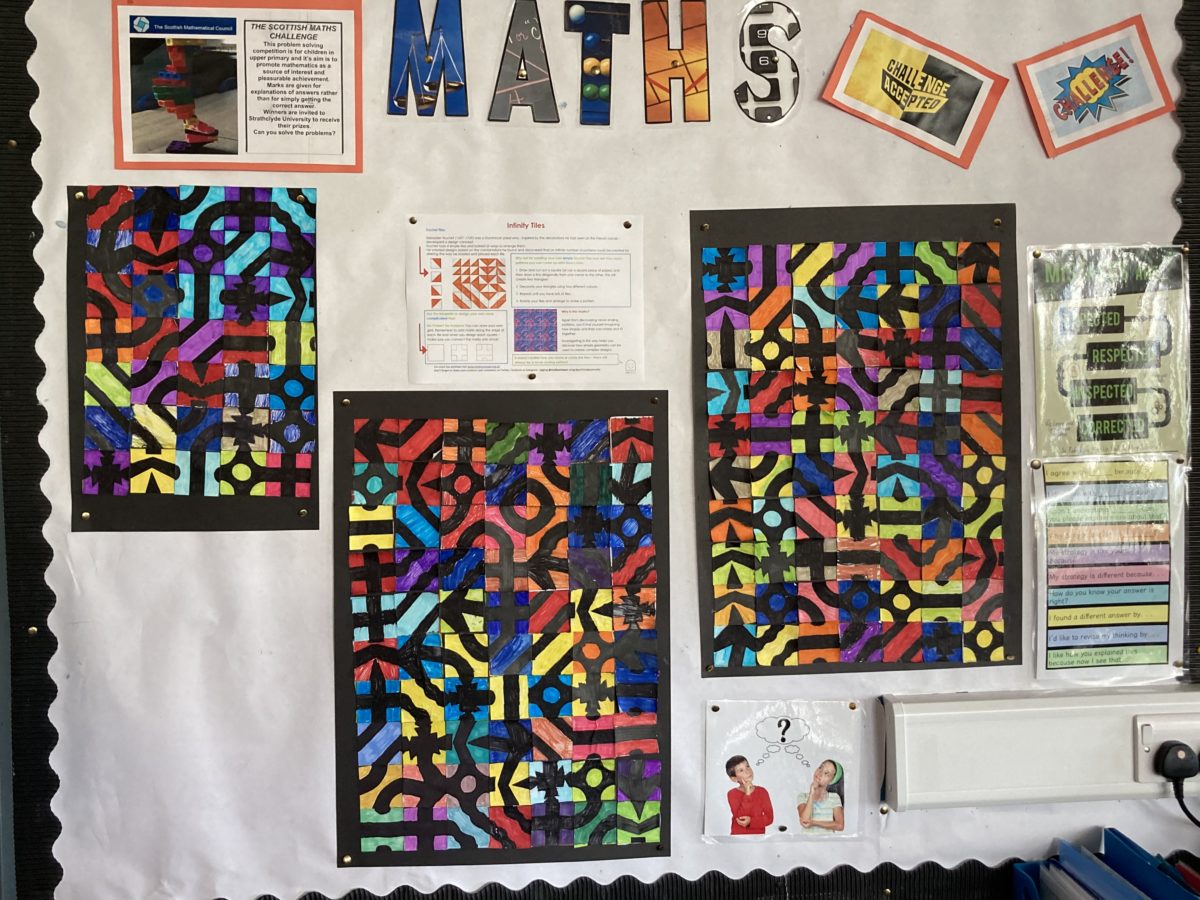
Maths Week Scotland
We were in a zoom call with Maths is Toast and we were learning about infinity tiles. Infinity tiles are things that can go on forever whatever way you put them they will always connect. They got us to learn about angles and different patterns.
We have finished the Scottish Maths Challenge which is what people do every year. We have three question everyone has to the same question and the Scottish Maths Challenge gives out awards like bronze, silver and gold. The questions are quite hard and you have to show your working out of the question but when you actually read the question it’s actually really easy.
This year we are doing the Maths Inside competition. It’s when you take a picture of something to do with maths and you put it on the website and they look at all the maths and the picture. This year there are options like shapes, in the wild and complete the pattern.
There is also a challenge on Sumdog with 1000 questions and all the schools in scotland are competing; it’s just questions like subtraction.
We have also got funding for maths homelink bags from Maths Week Scotland, and we now have lots of fun games we can take home and play to develop our maths skills.
A couple days ago we had a google meet with people that do vertical farming. Vertical farming is when there is a tower with loads of trays in it and a jet of water shoots in the top and there are holes in the trays and the water drips through the holes and there are L.E.D at the top which help with to process of growing the plants and they also grow trees. Instead of green houses.
William says ”I really like maths week scotland and it is very interesting”
By Dylan
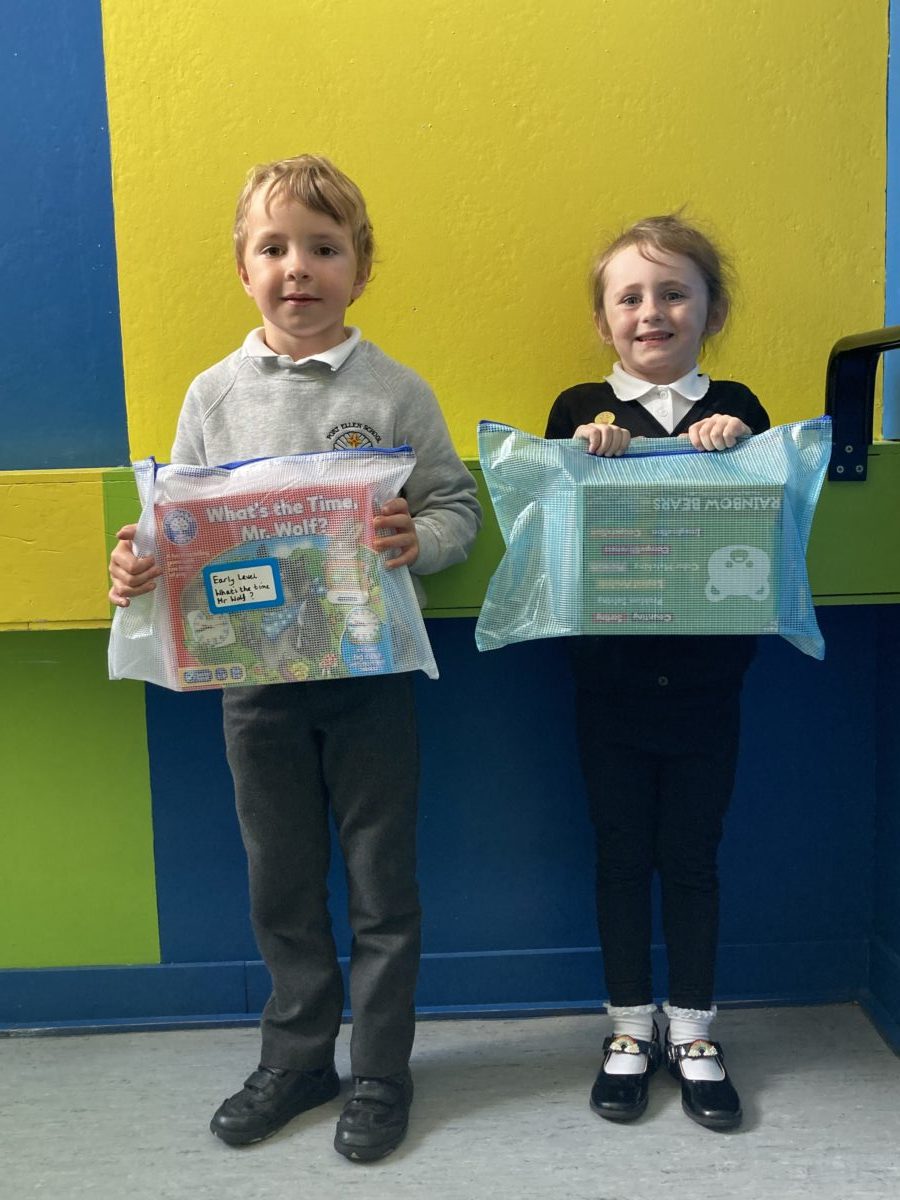
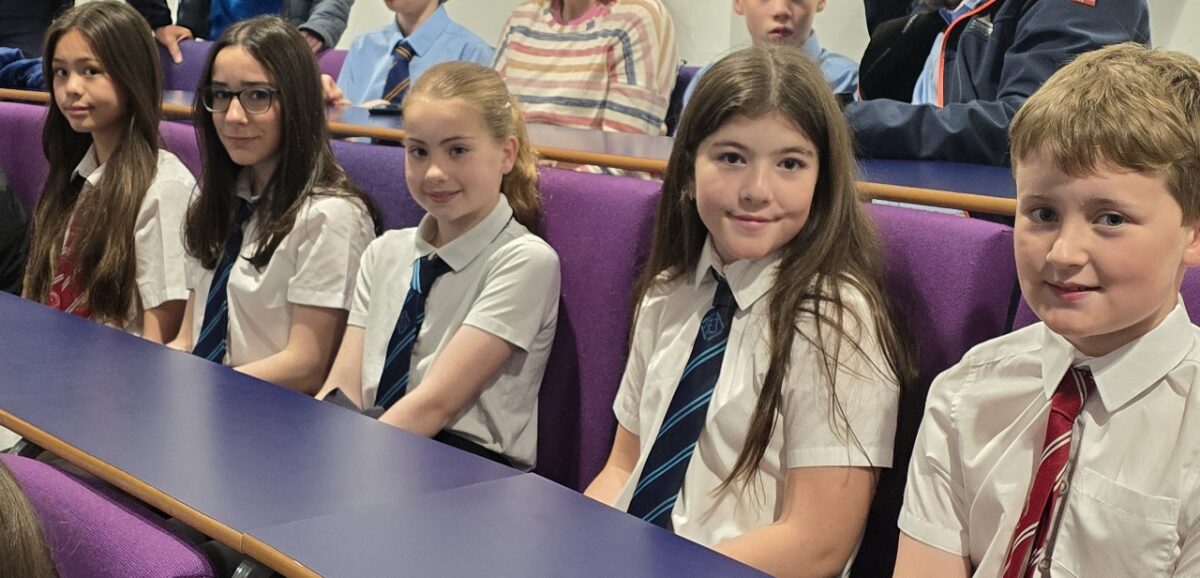 This is a blog about the Scottish math challenge that me (Hannah) and Brody went on. We achieved a silver award in the Scottish maths challenge and we went on a trip to the mainland. We got to go out for a nice meal and we visited Strathclyde University with other schools who have achieved, including Bowmore primary. There actually was a lot of schools that came across the mainland and even some P5 won silver!
This is a blog about the Scottish math challenge that me (Hannah) and Brody went on. We achieved a silver award in the Scottish maths challenge and we went on a trip to the mainland. We got to go out for a nice meal and we visited Strathclyde University with other schools who have achieved, including Bowmore primary. There actually was a lot of schools that came across the mainland and even some P5 won silver!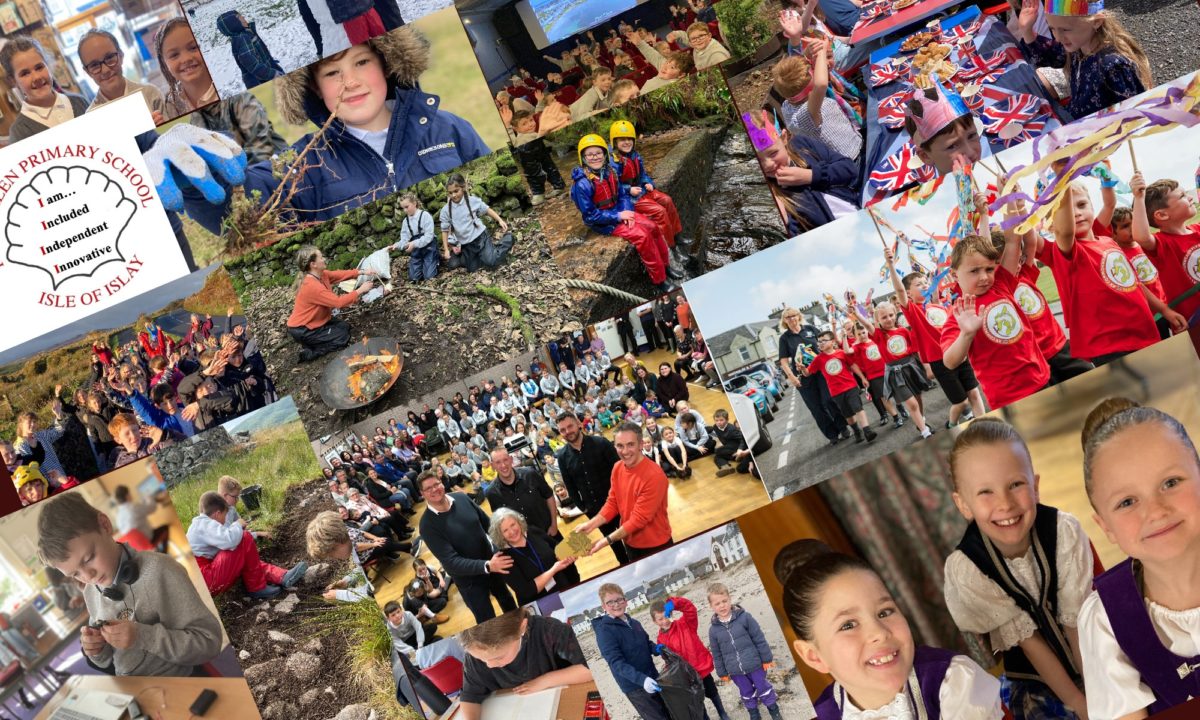

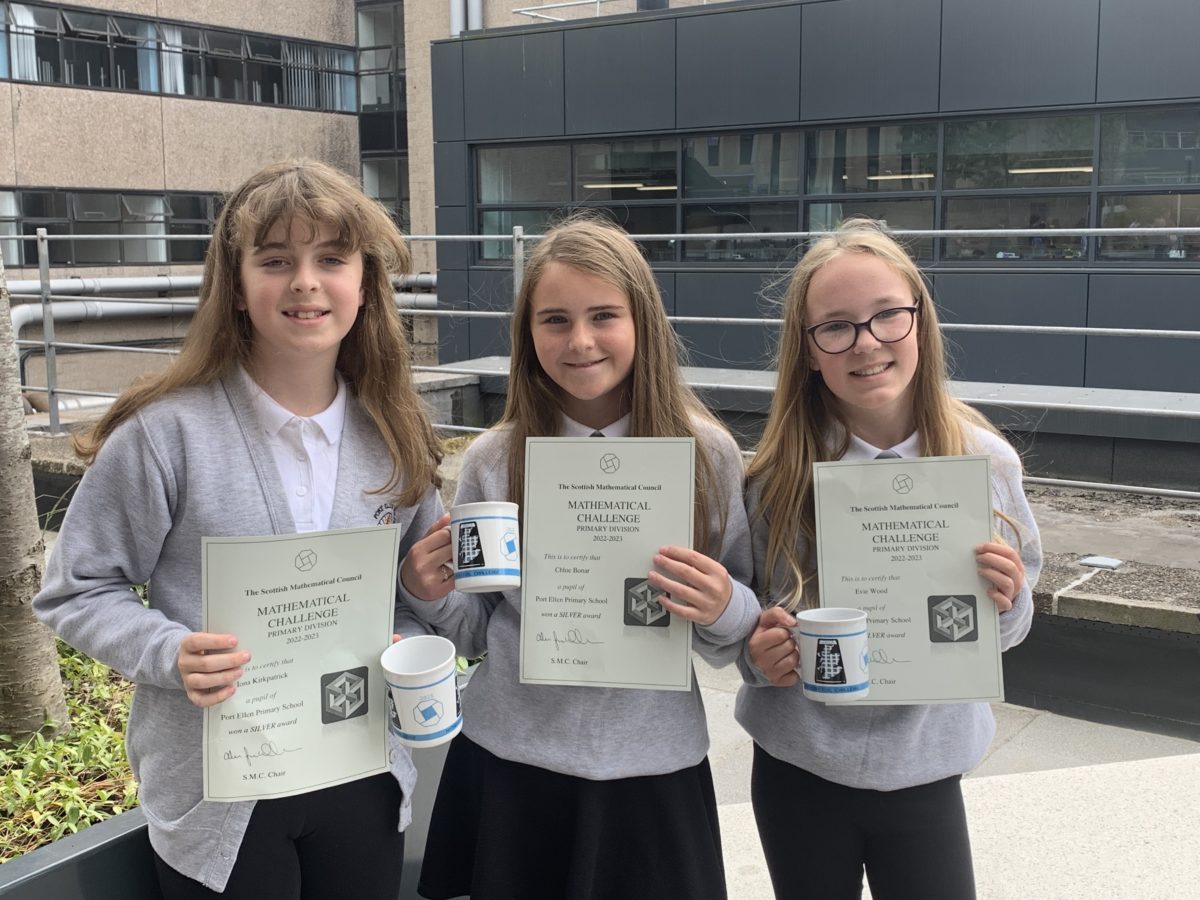

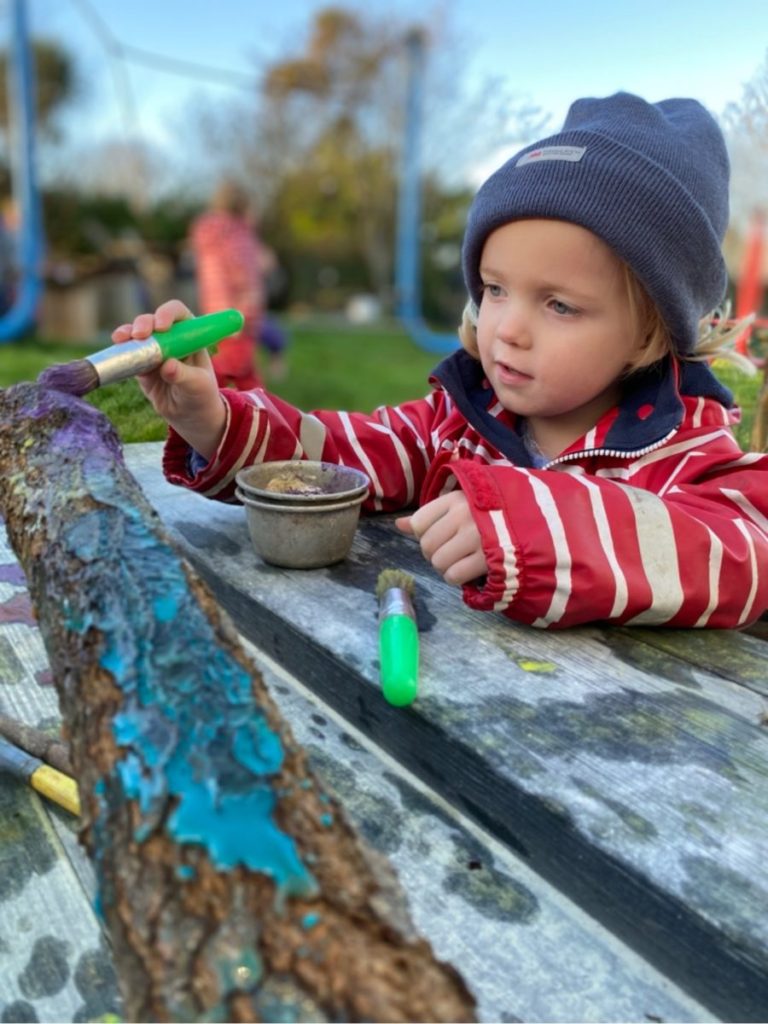
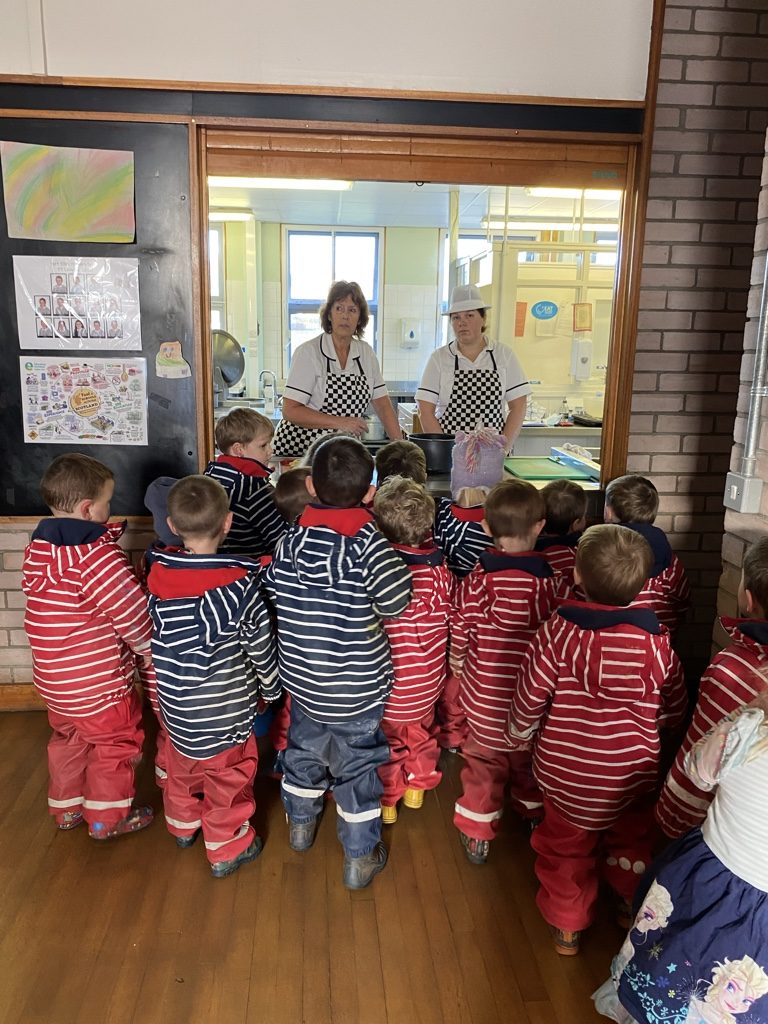
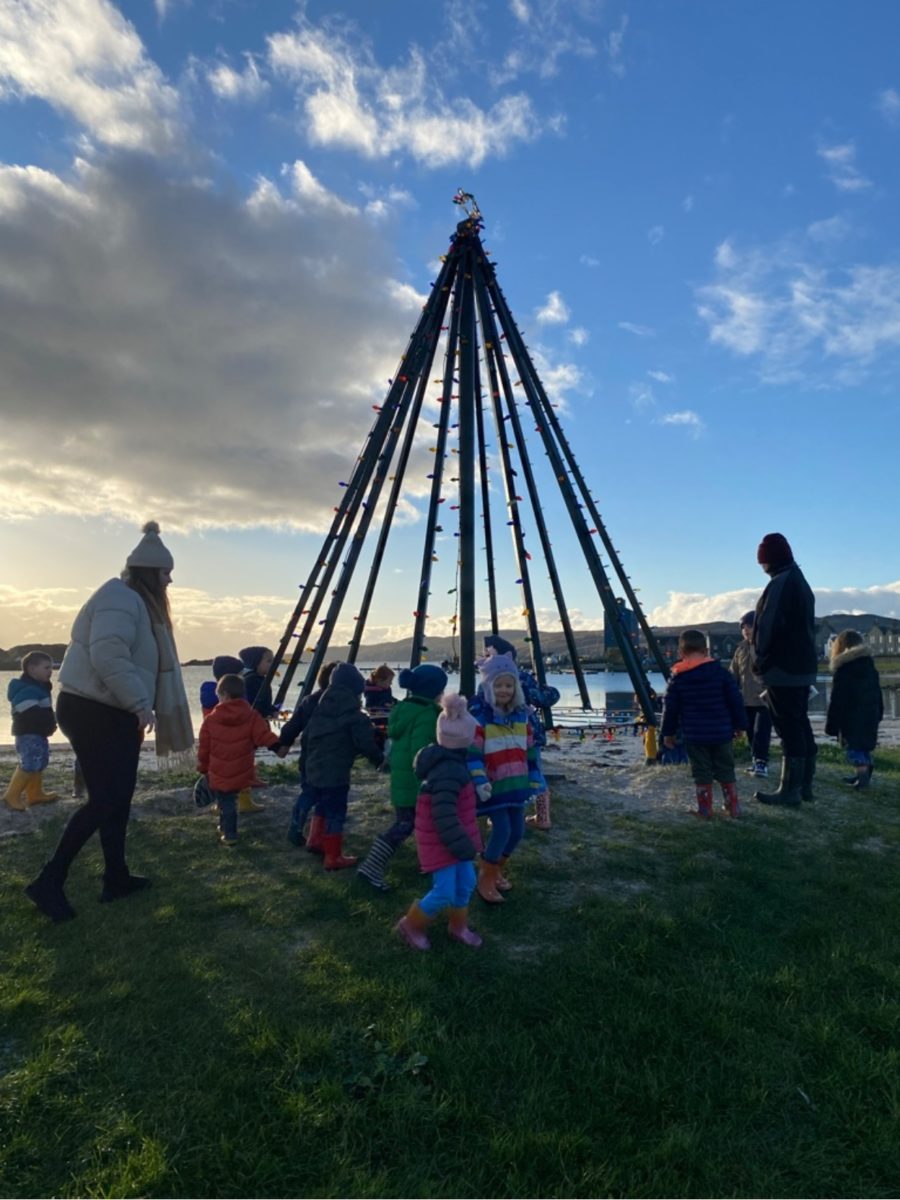


 On Thursday 21st March the whole of Port Ellen Primary School went down to the co-op beach for a beach clean. There was also people from high school to help, they where the John Muir group, and also ReJIG. Before everyone went we got put into groups of 5. There was 10 groups. I got paired with Chloe, Katy, Christopher and Phoenix. P67 had created a survey so we could find out what the different types of plastic were that we foundon the beach. There were lots of small bits of plastic between 2.5 and 50cm long, but the biggest plastic pollutant was ropes and nets from fishing boats. You can see the results in the graph below. We collected 2 bags full of rubbish, lots of it was plastic. Altogether the school got 900 bits of plastic rubbish off the shore. When we left all the beach had was sand and seaweed.
On Thursday 21st March the whole of Port Ellen Primary School went down to the co-op beach for a beach clean. There was also people from high school to help, they where the John Muir group, and also ReJIG. Before everyone went we got put into groups of 5. There was 10 groups. I got paired with Chloe, Katy, Christopher and Phoenix. P67 had created a survey so we could find out what the different types of plastic were that we foundon the beach. There were lots of small bits of plastic between 2.5 and 50cm long, but the biggest plastic pollutant was ropes and nets from fishing boats. You can see the results in the graph below. We collected 2 bags full of rubbish, lots of it was plastic. Altogether the school got 900 bits of plastic rubbish off the shore. When we left all the beach had was sand and seaweed.
 The Scottish Math Challenge is something that P6/7 have the chance to do every year. You get a set of three questions one in November, one in December and the final one in January. If you get up to 29 points that is a bronze 30 points that is a silver and if you get 33 points that is a gold. I got 32 points and that means that I got a silver which means that I get to go away to get an award and I was really pleased to get this and I want to keep on pushing myself further in STEM. Everyone else who took part in our class got a bronze. It is really important to know how to do some equations because it could help in a well paid job like being an engineer.
The Scottish Math Challenge is something that P6/7 have the chance to do every year. You get a set of three questions one in November, one in December and the final one in January. If you get up to 29 points that is a bronze 30 points that is a silver and if you get 33 points that is a gold. I got 32 points and that means that I got a silver which means that I get to go away to get an award and I was really pleased to get this and I want to keep on pushing myself further in STEM. Everyone else who took part in our class got a bronze. It is really important to know how to do some equations because it could help in a well paid job like being an engineer. As part of our Engineering project this year we wanted to show we could get better at engineering. At the start of the project we had to build bridges, and ours were made from straws and did not work well or hold a lot of weight. We did the bridge building test again to see if we had improved, but this time we were only allowed to use paper to build our bridges. The point of it was to try and engineer a bridge that could hold a calculator, at first it was quite hard to make a bridge that could hold one. Me and Rowan decided to apply what we had learned in maths about 3D shapes and put cylinders under our bridge so that it could support the weight of a calculator, a lot of the bridges ended up being able to support a lot more than a calculator. Our bridge managed to hold 6kg in weight! I was surprised that it could hold that much because it was just paper and tape, eventually we over tested it and wrecked the cylinders on the bridge. Everyones bridge could hold at least a calculator and some bridges could hold more, our bridge could hold the most in the class which I was surprised about. We applied our engineering knowledge to building the bridge and this showed how much we improved!
As part of our Engineering project this year we wanted to show we could get better at engineering. At the start of the project we had to build bridges, and ours were made from straws and did not work well or hold a lot of weight. We did the bridge building test again to see if we had improved, but this time we were only allowed to use paper to build our bridges. The point of it was to try and engineer a bridge that could hold a calculator, at first it was quite hard to make a bridge that could hold one. Me and Rowan decided to apply what we had learned in maths about 3D shapes and put cylinders under our bridge so that it could support the weight of a calculator, a lot of the bridges ended up being able to support a lot more than a calculator. Our bridge managed to hold 6kg in weight! I was surprised that it could hold that much because it was just paper and tape, eventually we over tested it and wrecked the cylinders on the bridge. Everyones bridge could hold at least a calculator and some bridges could hold more, our bridge could hold the most in the class which I was surprised about. We applied our engineering knowledge to building the bridge and this showed how much we improved! Every year Mrs Clark’s class take part in the Scottish Maths Challenge, a competition where you have to complete tricky maths problems that require you to think outside the box. It is a great way to improve your maths problem solving skills and learn to apply strategies to help you work out the answers. Children can opt to take part in the challenges, and there are three sets of questions over the year. One of the questions this year was:
Every year Mrs Clark’s class take part in the Scottish Maths Challenge, a competition where you have to complete tricky maths problems that require you to think outside the box. It is a great way to improve your maths problem solving skills and learn to apply strategies to help you work out the answers. Children can opt to take part in the challenges, and there are three sets of questions over the year. One of the questions this year was:




